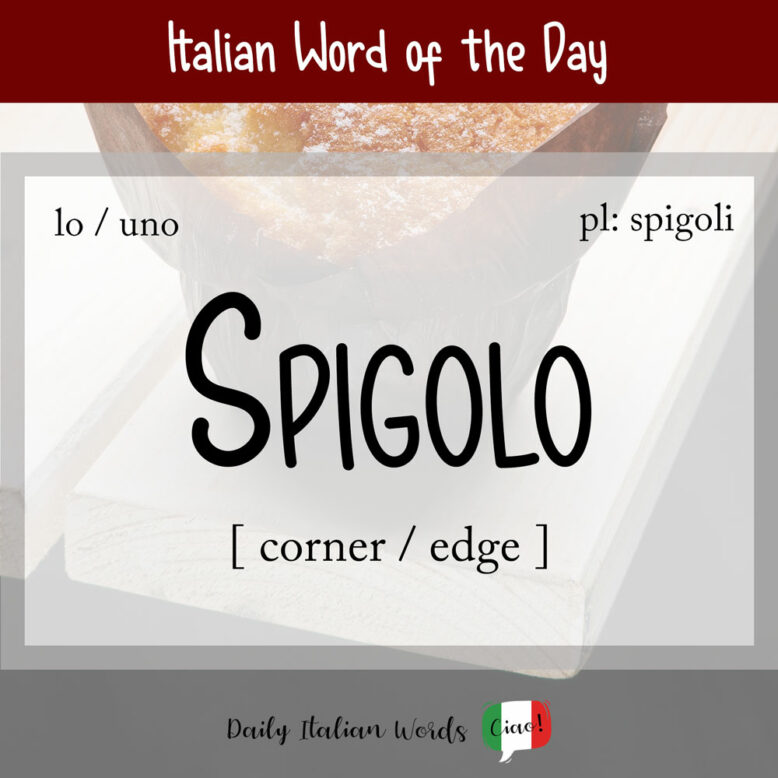An important word to know if you have a baby or toddler wandering around the house is spigolo which means corner, angle or edge. It is used most frequently to talk about the edges of furniture (particularly tables), walls, boxes, and cubes.

Spigolo is a masculine noun that begins with the consonants sp, so it takes the following definite and indefinite articles:
- lo spigolo = the corner
- gli spigoli = the corners
- uno spigolo = a corner
- (degli) spigoli = (some) corners
Attento a non sbattere la testa contro lo spigolo di questo tavolo.
Be careful not to hit your head on the corner of this table.

A sharp edge is known as uno spigolo vivo whereas a blunt or rounded-off edge is uno spigolo smussato. If you want to say “to round off” or “to smooth” a corner, you can use the verbs smussare or arrotondare.
To stop young children from hurting themselves, it is common practice to cover the edges and corners of things with paraspigoli (corner guards) until they are old enough to control their movements and avoid dangerous obstacles.
In a figurative sense, spigolo can be used to refer to a person’s character. For example, a person who is tutto spigoli (literally “all corners”) is considered difficult to deal with.
Mario è un uomo tutto spigoli.
Mario is a difficult man to deal with.
Spigoli, in its plural form, is also a figurative synonym for animosity or resentment between two people. For instance, if you want to smussare gli spigoli tra due persone (literally “to smooth out the corners between two people”), your goal is to clear the air between them.

From spigolo we also get the adjective spigoloso which means sharp-cornered, pointy or angular.
Quel ragazzo ha dei lineamenti molto spigolosi.
That boy has very sharp features.
Heather Broster is a graduate with honours in linguistics from the University of Western Ontario. She is an aspiring polyglot, proficient in English and Italian, as well as Japanese, Welsh, and French to varying degrees of fluency. Originally from Toronto, Heather has resided in various countries, notably Italy for a period of six years. Her primary focus lies in the fields of language acquisition, education, and bilingual instruction.


